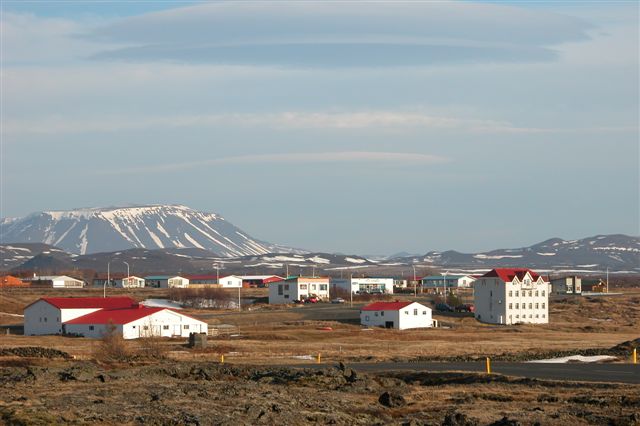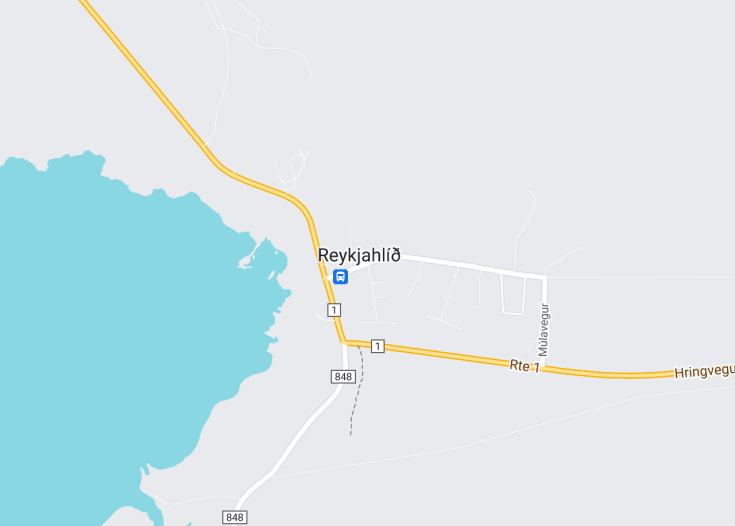Nestled in the northeastern region of Iceland, Reykjahlid is a charming village situated near the stunning Lake Myvatn. Known for its breathtaking natural landscapes, geothermal activity, and rich cultural history, this small village serves as an ideal gateway for exploring the unique geological formations and diverse ecosystems of the area. Visitors will find themselves enchanted by the dramatic scenery, from steaming lava fields and craters to lush wetlands teeming with birdlife, making Reykjahlid a must-visit for nature lovers and adventure seekers alike.
When visiting Reykjahlid, make sure to pack versatile clothing as temperatures can fluctuate dramatically, especially near geothermal areas. Layering is key to a comfortable experience.
Plan your visit to Reykjahlid during the summer to fully enjoy the midnight sun and the vibrant wildlife that thrives around Lake Myvatn during this season.
Top things to do & see in Reykjahlid
Select the following sights and activities to discover best tickets and tours available in Reykjahlid.
Reykjahlid: A Gateway to Nature’s Marvels
| Country | Iceland |
| Time in Reykjahlid | GMT+0 |
| Language spoken | Icelandic |
| Population | 130 (According to the latest data) |
| Currency | Icelandic Króna (ISK) |
| Airports |
|
Reykjahlid, a small village located in the northeastern region of Iceland, is a serene getaway packed with breathtaking natural sceneries and unique geological formations. Nestled by the shores of Lake Mývatn, this locale offers a spectacular view of water bodies intertwined with volcanic landscapes, creating a stunning visual contrast that captivates both locals and tourists alike.
Historically, Reykjahlid has had its share of dramatic narratives, with residents enduring and overcoming the threat of volcanic eruptions, the most notable being the explosive eruption of 1729. This historical resilience has shaped the community and its cultural heritage, making it a symbol of survival and natural coexistence. Today, Reykjahlid serves not only as a residential area but also as a crucial hub for tourism, showcasing the interplay between humanity and nature.
This village’s proximity to various natural attractions, including the famous Mývatn Nature Baths, the intriguing lava fields, and abundant birdlife, provides a perfect base for nature lovers and adventure seekers. The landscape around Reykjahlid is dotted with hiking trails that lead through areas of geological wonder, including craters, sulfur pits, and sprawling lava formations. These natural features speak to the volcanic activity that has sculpted the region over millennia.
Moreover, the village’s commitment to sustainable tourism ensures that its natural beauty is preserved for future generations while providing immediate economic benefits to the local community. Facilities geared towards visitors are crafted with environmental considerations, promoting a green approach to exploring and enjoying the region.
In conclusion, Reykjahlid is more than just a travel destination; it’s a vibrant testament to Iceland’s dynamic environment and cultural fortitude. Whether it’s the draw of soaking in geothermal waters, exploring epic landscapes, or simply experiencing the quiet of an isolated village, Reykjahlid offers a memorable junction of activities and tranquility, wrapped in Iceland’s unforgettable panoramic embrace.
Where is Reykjahlid?
Positioned in the heart of Northeast Iceland, Reykjahlid is embraced by the dramatic landscapes of Lake Mývatn.
Distances:
| Route | Distance by car | Time by car |
|---|---|---|
| From Akureyri to Reykjahlid | 58 mi | 1 hour 10 mins |
| From Húsavík to Reykjahlid | 34 mi | 40 mins |
What is Reykjahlid famous for?
Reykjahlid is renowned for its proximity to the geothermal Mývatn Nature Baths and diverse natural ecosystems, making it a hub for ecotourism and geological studies.
History
Early Settlements (9th Century)
Reykjahlíð, located in the serene surroundings of Mývatn in North Iceland, boasts a history that dates back to the Viking Age. The first known inhabitants of the area were Norsemen, who arrived in Iceland in the late 9th century. These early settlers were drawn to the region due to its fertile land and the abundant fishing opportunities in Lake Mývatn.
Development Through the Ages (9th Century – 20th Century)
Over the centuries, Reykjahlíð evolved from a sparse settlement into a thriving community. The region’s geothermal activity played a significant role in shaping local life. Residents utilised the geothermal heat for baking, bathing, and heating, uniquely adapting their lifestyle to their volcanic surroundings. The area remained relatively isolated, however, focusing mainly on agriculture and fishing until the 20th century.
Modern Era (20th Century – Present)
In the 20th century, Reykjahlíð began to gain recognition as a tourist destination, thanks to its natural beauty and unique geological features such as lava formations, hot springs, and craters like Krafla. The establishment of the Krafla Power Station in the 1970s marked the beginning of geothermal energy exploitation, which brought new economic opportunities to the region. Today, Reykjahlíð is not only a hub for geothermal energy but also a beloved destination for visitors seeking to experience Iceland’s incredible natural landscapes and cultural heritage.
Visit Reykjahlid
What to see and do in Reykjahlid
Reykjahlíð serves as a gateway to some of Iceland’s most picturesque landscapes and geological wonders. Visitors can explore the dramatic scenery of Lake Mývatn, which offers excellent opportunities for bird watching, hiking, and photography. Key attractions include the Mývatn Nature Baths, a geothermal spa known for its healing waters, and the Hverfjall crater, offering panoramic views after a rewarding hike. Don’t miss out:
- The Dimmuborgir lava formations, with their imposing structures and folklore-rich history.
- The boiling mud pots and fumaroles at Námaskarð Pass.
- Guided tours to the nearby Krafla volcanic area, featuring the striking Víti crater lake.
Festivities in Reykjahlid
Reykjahlíð hosts an array of cultural and nature-focused events throughout the year. The Mývatn Nature Baths often celebrate the summer solstice with unique events and extended hours, providing a magical ambiance under the Midnight Sun. Winter visitors can enjoy the Yule Lads visitation in December, a traditional Icelandic celebration with a twist of local folklore.
Best time to visit Reykjahlid
The optimal time to visit Reykjahlíð is during the summer months, from June to August, when the weather is most favorable and the days are long, allowing for extended sightseeing and exploration. However, visiting in winter provides a starkly beautiful landscape and the possibility of witnessing the Northern Lights.
Is Reykjahlid worth visiting?
Reykjahlíð is undoubtedly worth visiting for those who appreciate nature, geology, and a touch of adventure. Its unique position within the volcanic landscape of Iceland offers unparalleled opportunities to engage with both the power and beauty of nature. Whether you are soaking in geothermal spas, hiking around craters, or observing the diverse wildlife at Lake Mývatn, Reykjahlíð provides a compelling, once-in-a-lifetime experience that resonates with outdoor enthusiasts and culture seekers alike.









